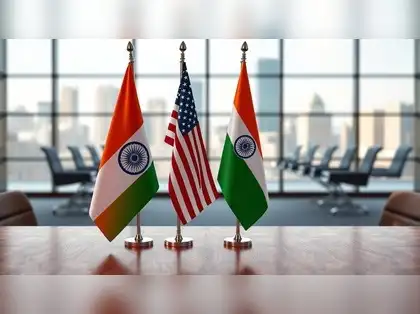US, India in Talks on Trade Deal That May Cut Tariff Below 20%

Interim deal underway: The U.S. and India are reportedly close to finalizing an interim trade agreement, potentially setting tariffs on Indian imports below 20%, compared to the initially proposed 26%, giving India a more favorable position than other regional peers .
No tariff demand letter expected: Unlike several Asian countries that received official tariff notices this week, India is not anticipated to receive one. Instead, they expect a joint public statement announcing the deal .
Timeline pressures: The U.S. extended its tariff notification deadline to August 1, requesting interim agreements by the earlier July 9 deadline. India’s deal may be announced soon, with a broader, fuller agreement expected by fall .
—
🔍 Context & Implications
Dual-track diplomacy: While negotiating in Washington, both nations are simultaneously locking horns at the WTO in Geneva—disputing issues like dairy import rules and steel and auto components tariffs .
Strategic positioning: India has proposed slashing its average tariff from around 13% to below 4%—offering exemptions on 60% of U.S. goods and preferential access for 90%—in exchange for greater access to U.S. markets, particularly in textiles, pharmaceuticals, and agriculture .

Geoeconomic shift: Analysts like Nomura argue that India stands to benefit from global supply-chain realignment, as multinational businesses diversify away from China and toward India. An early trade understanding further boosts India’s competitive edge .
—
⚠️ What Could Derail It?
Domestic concerns: India’s agricultural and dairy sectors are lobbying hard against lowered tariffs. Negotiators are walking a tightrope—balancing farm protectionism and political sensitivities .
Presidential override risk: A Reddit user highlighted past examples—“Vietnam got it down to 11%… then Trump stepped in…and now it’s 20%”—suggesting the final tariff may be influenced by last-minute political moves .
Unresolved issues: While goods are being hashed out now, services, labor mobility, and non-tariff barriers will likely be deferred to later, more comprehensive negotiations .
—
🧭 What to Watch Now
Item Why It Matters
Official announcement Look for a joint statement from Washington, possibly soon.
Tariff structure Will the base rate be under 20%? Any plans to deepen cuts?
Future rounds Follow-up talks on agriculture, dairy, services—with broader deal by Fall.
WTO tension Legal disputes in Geneva could spill over and influence bilateral talks.
—
🧠 Bottom Line
The potential interim US‑India trade deal represents a major diplomatic win, positioning India ahead of other nations facing steep U.S. tariffs. With negotiated duties likely under 20%, this agreement paves the way for stronger economic integration, benefiting exporters and global supply chains.
That said, political dynamics and upcoming trade rounds mean the actual tariff outcome remains uncertain—market participants and policymakers should stay alert.
